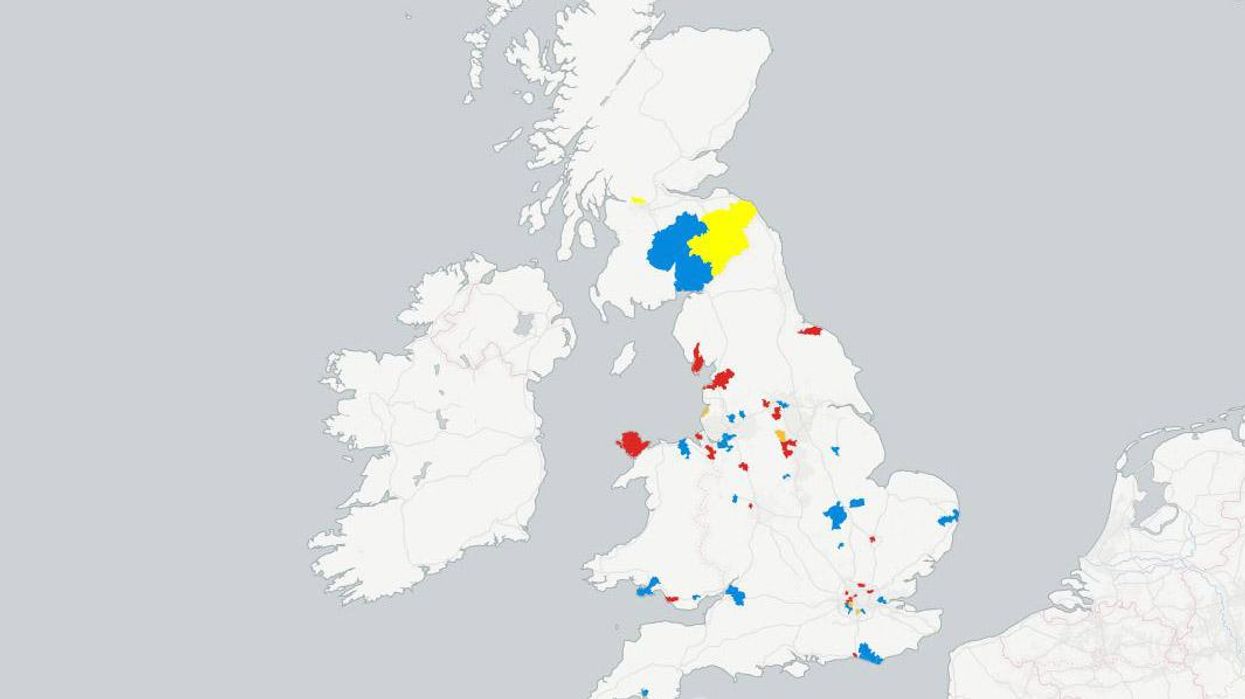Louis Dor
Jun 07, 2017

Picture:
Carto/Louis Doré
Less than two months ago, Theresa May called for a general election on 8 June.
Her reasons for the U-turn were supposedly 'Brexit', but obviously were more to do with poll ratings and opportunism.
Both the Labour leader Jeremy Corbyn and Liberal Democrat leader Tim Farron welcomed the news.
Jeremy Corbyn at the time said:
I welcome the Prime Minister’s decision to give the British people the chance to vote for a government that will put the interests of the majority first.
Labour will be offering the country an effective alternative to a government that has failed to rebuild the economy, delivered falling living standards and damaging cuts to our schools and NHS.
In the last couple of weeks, Labour has set out policies that offer a clear and credible choice for the country. We look forward to showing how Labour will stand up for the people of Britain.
Professor John Curtice of the University of Strathclyde told the BBC:
No opposition has gone into a general election in a weaker position.
Yet, polling has predictably narrowed as we have approched the finish line. And Mr Corbyn has been spurred on by some particularly interesting numbers.
Tim Farron tweeted his response at the time, saying:
So which constituencies are the parties going to be targeting?
Anything with a winning majority of under five per cent at the last election or by-election is probably on the radar.
There are 53 constituencies of that kind, the majority of which are Conservative and Labour:
Here are all the seats that were won within a five per cent cent majority at the last election or by-election:
Here's the full list by constituency and majority:
Conservative:
- Bedford, 2.38 per cent
- Bolton West, 1.65 per cent
- Brighton, Kemptown, 1.52 per cent
- Bury North, 0.84 per cent
- Cardiff North, 4.18 per cent
- Corby, 4.29 per cent
- Croydon Central, 0.31 per cent
- Derby North, 0.09 per cent
- Dumfriesshire, Clydesdale and Tweeddale, 1.53 per cent
- Eastbourne, 1.39 per cent
- Gower, 0.06 per cent
- Kingston and Surbiton, 4.78 per cent
- Lewes, 2.14 per cent
- Lincoln, 3.08 per cent
- Morley and Outwood, 0.87 per cent
- Peterborough, 4.09 per cent
- Plymouth, Moor View, 2.41 per cent
- Plymouth, Sutton and Devonport, 1.09 per cent
- Telford, 1.8 per cent
- Thornbury and Yate, 3.08 per cent
- Thurrock, 1.08 per cent
- Twickenham, 3.25 per cent
- Vale of Clwyd, 0.67 per cent
- Warrington South, 4.63 per cent
- Waveney, 4.61 per cent
- Weaver Vale, 1.72 per cent
Labour:
- Bridgend, 4.88 per cent
- Dewsbury, 2.71 per cent
- Enfield North, 2.35 per cent
- Harrow West, 4.74 per cent
- Hove, 2.37 per cent
- Lancaster and Fleetwood, 3.03 per cent
- Middlesbrough South and East Cleveland, 4.97 per cent
- North East Derbyshire, 3.93 per cent
Liberal Democrat:
- Carshalton and Wallington, 3.17 per cent
- Orkney and Shetland, 3.59 per cent
- Richmond Park (Byelection), 4.53 per cent
- Sheffield, Hallam, 4.24 per cent
- Southport, 3 per cent
SNP:
- Berwickshire, RoxBorough and Selkirk, 0.6 per cent
- East Dunbartonshire, 3.95 per cent
More: The real reason Theresa May just called for a general election in 5 charts
Top 100
The Conversation (0)













